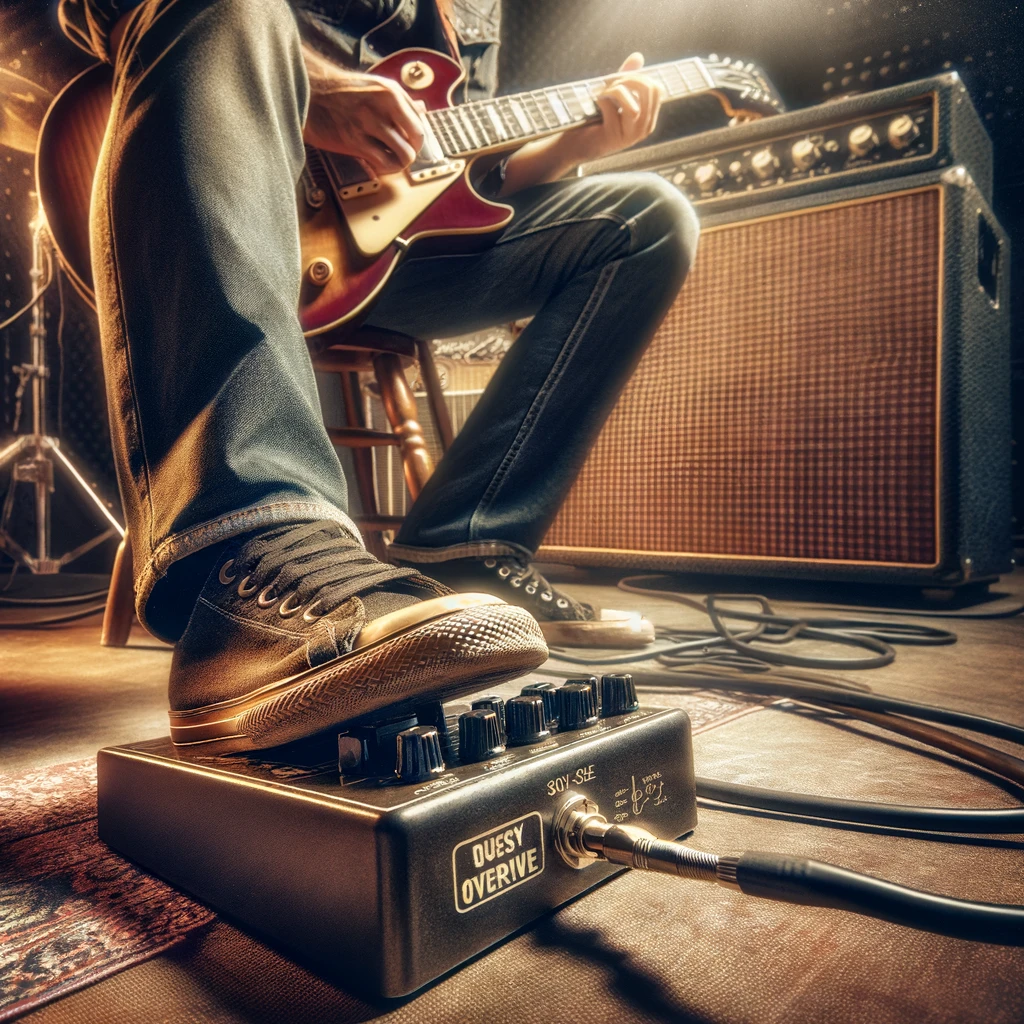
Introduction Overdrive is a quintessential effect in the realm of guitar playing, shaping the sound of countless iconic songs and genres. Its warm, natural, and dynamic character makes it a staple in the toolkit of guitarists, from blues and rock to even jazz and beyond. Understanding overdrive is not just about knowing how to use a pedal; it’s about grasping the essence of what makes your guitar sing with more expression and color.
1. The Basics of Overdrive At its core, overdrive simulates the natural sound of a tube amplifier being pushed to its limits, producing a warm, slightly distorted sound. Unlike distortion, which aggressively clips the sound wave, overdrive adds gain more subtly, preserving the nuances of the guitar’s natural tone.
2. Types of Overdrive Pedals There are various types of overdrive pedals, each with its unique characteristics. Some emulate classic amp sounds, like the Ibanez Tube Screamer, known for its mid-range boost, or the Boss Blues Driver, celebrated for its crisp, articulate tone. Experimenting with different pedals helps in finding the one that best suits your musical style and preference.
3. Using Overdrive in Your Playing Overdrive isn’t just about achieving a certain sound; it’s also about how it interacts with your playing dynamics. Playing softly with an overdrive pedal can yield a clean tone, while digging in harder will produce more grit and saturation. This dynamic sensitivity makes overdrive a versatile tool for expression.
4. Overdrive in Different Genres While closely associated with rock and blues, overdrive has found its place in various music genres. In jazz, a mild overdrive can add warmth to solos. In country music, it can give twangy licks an extra edge. Understanding the role of overdrive in different genres can expand your musical vocabulary.
5. Pairing Overdrive with Other Effects Overdrive plays well with other effects. For instance, using a delay pedal with overdrive can create ambient, spacey textures, while pairing it with a wah pedal can result in expressive, vocal-like tones. The key is to experiment and find combinations that inspire new sounds.
6. Technical Considerations Setting up overdrive involves more than just plugging in a pedal. Factors like the order of effects in your signal chain, the type of amplifier you use, and even the choice of guitar can significantly impact the overall sound. Generally, placing overdrive early in the signal chain, before modulation and time-based effects, yields the best results.
7. Crafting Your Tone Each component of your setup – guitar, pedals, amp – contributes to your overall tone. Adjusting the EQ settings on your overdrive pedal can dramatically change its character. For instance, boosting the lows can add thickness to your rhythm playing, while accentuating the highs can make your leads stand out.
8. Maintenance and Upkeep Like any electronic device, overdrive pedals require proper maintenance. Regularly checking connections, cleaning potentiometers to avoid crackling noises, and ensuring your pedal is safely stored will extend its lifespan and ensure consistent performance.
Conclusion Overdrive is more than just a pedal; it’s a gateway to a world of sonic possibilities. Whether you’re playing searing solos, crunchy rhythms, or simply adding a bit of warmth to your clean tone, overdrive is a tool that invites exploration and creativity. Understanding and mastering overdrive can elevate your guitar playing, helping you express your musical ideas with greater depth and nuance.